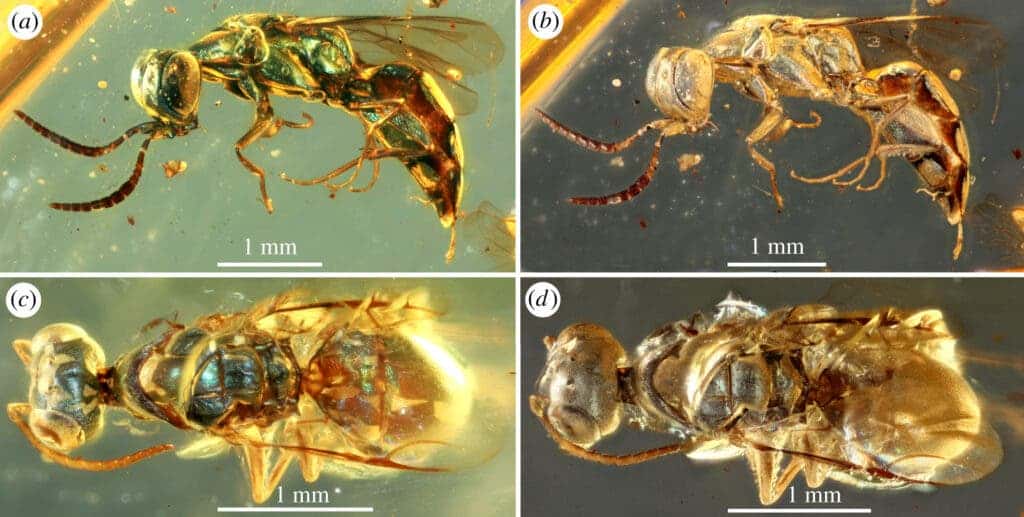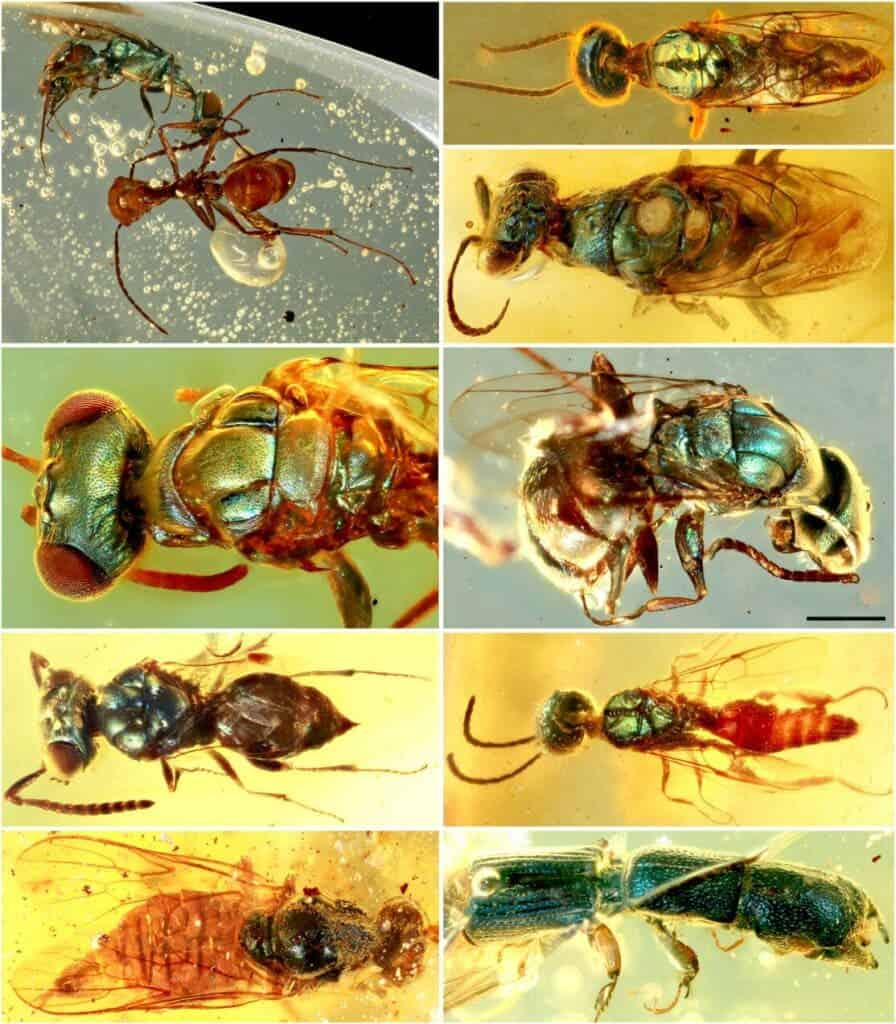Researchers have discovered the true colors of a group of fossilized insects, trapped in amber approximately 99 million years ago in Myanmar. The ancient insects include cuckoo wasps, soldier flies, and beetles, all bursting in metallic blue, purple, and green colors.

Nature is very visually rich but fossils rarely retain evidence of an organism’s original color. Nevertheless, paleontologists are now finding ways of teasing out colors from well-preserved fossils, whether they be dinosaurs and flying reptiles or ancient snakes and mammals.
Knowing the color of extinct species is actually very important, as it can tell researchers many things about the behavior of the animals. Colors could have been used to attract mates or warn off predators or even help with temperature regulation, for example. Knowing more about them can also help researchers know more about ecosystems and environments.
For the new study, a research team from the Nanjing Institute of Geology and Palaeontology of the Chinese Academy of Sciences (NIGPAS) looked at 35 individual amber samples with fantastically preserved insects trapped inside. The fossils were found in an amber mine in northern Myanmar.
“The amber is mid-Cretaceous, approximately 99 million years old, dating back to the golden age of dinosaurs,” said Cai Chenyan, the lead author, in a press release. “It is essentially resin produced by ancient coniferous trees that grew in a tropical rainforest environment. Animals and plants trapped in the thick resin got preserved, some with life-like fidelity.”
Colors in nature usually fall under three main categories: bioluminescence, pigments, and structural colors. The amber fossils found retained structural colors, which tend to be intense and rather eye-grabbing (including metallic colors) and are produced by microscopic light-scattering structures located on the heads, bodies, and limbs of animals.
The researchers polished the fossils using sandpaper and diatomite powder. Some pieces of amber were polished into very thin slices, making the insects clearly observable and the surrounding amber matrix almost transparent in bright light. The images included in the study were edited to adjust for brightness and contrast.
“The type of color preserved in the amber fossils is called structural color,” said Pan Yanhong, a co-author of the study, in a statement. “The surface nanostructure scatters light of specific wavelengths” which “produces very intense colors,” said Pan, adding that this “mechanism is responsible for many of the colors we know from our everyday lives.”

Among all the fossils, the cuckoo wasps were particularly stunning, with their heads, thorax, abdomen, and legs featuring hues of metallic blue-green, yellow-red, violet, and green. The color patterns were a close match to cuckoo wasps alive today, according to the research. Other standouts included blue and purple beetles and metallic dark-green soldier flies.
The researchers used electron microscopy to demonstrate that the amber fossils have a “well-preserved exoskeleton nanostructure that scatters light.”
“Our observations strongly suggest that the color preserved in some amber fossils may be the same as displayed by the insects when alive, some 99 million years ago,” wrote the authors in the study. “This is moreover corroborated by the fact that metallic blue-green coloration is frequently found in extant living cuckoo wasps.”
The study was published in the journal Proceedings of the Royal Society B.









